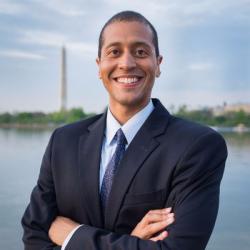In the third edition of The Fast Lane blog, we look at updates from the month of September covering research, commentary, and news impacting metropolitan communities around the country.
Now just three weeks from the election, anticipation is brimming on what this fall’s races will mean for federal, state, and local leadership. With so much at stake—including the control of Congress, 36 governorships, thousands of local legislative seats, and hundreds of key ballot initiatives—the results at the polls on November 6 will likely reverberate for decades to come.
Who has electoral momentum going into November 6?
While predictions abound on the battle for Congress, pundits have paid less attention to the state and local executive and legislative races that will significantly shape the country’s direction over the next few years. In the midst of voter purge controversies in Georgia between gubernatorial candidates Brian Kemp and Stacey Abrams (who would be America’s first black female governor if elected), Brookings Metro scholar Andre Perry analyzed the unprecedented opportunities for black female candidates to make waves in this year’s election and beyond. His report concludes that although they remain under-represented as candidates for elected office today, black women running in minority-white districts will likely increase their political voice and power in the years to come.

Which places are doing better?
As midterm elections near, Brookings scholars have analyzed several key economic indicators to see which places around the country are gaining economic momentum. Mark Muro and Jacob Whiton find that in 2017, more communities are seeing gains in the nation’s ongoing economic growth. Notably, smaller rural areas “captured a slightly disproportionate share of U.S. job growth, while the nation’s big cities slightly underperformed.” The authors note that this welcome news of growth in more places should be tempered by both near- and longer-term economic trends.

And in a new analysis focused on which places made progress against poverty in 2017, Elizabeth Kneebone finds that the news is mixed. While median household income increased in 2017, and the national poverty rate decreased 0.4 percentage points (to 12.3 percent, its lowest level since 2006), those gains were smaller than the year before, and the actual number of people in poverty remained unchanged in 2017. Additionally, Kneebone writes that while poverty rates in cities remain higher than in suburbs, the gap continues to narrow.
Which policies will emerge at the ballot box?
Spiraling housing costs and underperforming infrastructure continue to be vital concerns for communities across the nation, as candidates’ platforms and state and local ballot initiatives reflect. Jenny Schuetz takes a look at housing proposals, including from three U.S. senators, through the lens of Star Wars. She ultimately endorses zoning reforms that produce affordable housing, and notes that as the “renters strike back,” they are exercising more of a collective voice than at any time since the Great Recession began.
Adie Tomer and Lara Fishbane meanwhile find cause for optimism in the nation’s broadband adoption gains over the past four years, an outcome positively impacting millions of households who are now reliably connected to the internet. While more work remains, the authors write that broadband adoption rose in the 100 largest metro areas from 74.8 percent in 2013 to 85.8 percent in 2017. Yet for this encouraging trend, local leaders emerging from this fall’s election would be wise to understand that “inconsistent growth rates across metro areas confirm that many people are still left in the digital dark.”

What does America’s changing population mean for future elections?
While demographic trends make very clear that America’s population is undergoing rapid shifts, there is growing concern that a potential citizenship question on the forthcoming 2020 census will provide an inaccurate picture of who resides in the United States. In a New York Times op-ed, William Frey predicts that the presence of the question could lead America’s white population to be over-counted by more than 2 percent, and its Hispanic population to be undercounted by roughly the same degree.
Frey explains that an inaccurate once-in-a-decade census would influence congressional reapportionment, hurting large, immigrant-heavy states; shape how congressional and state legislative districts are drawn; and misallocate billions of dollars in state and federal funds. He writes that “what this selective underenumeration will not do is make America’s growing racial minority populations disappear.”
Can our system of federal, state, and local power work better?
The outcomes of this year’s elections will help answer pertinent questions regarding whether our system of federalism (that is, the interplay between federal, state, and local power) can be improved. Can we reset the federal, state, and local dynamic? Must cities go it alone in our current power dynamic? Amy Liu discusses these questions in a recent piece, noting the opportunity for voters to go to the ballot box to choose new governors, state legislators, and members of Congress who will recognize that collaboration is key toward providing an adequate safety net, supporting workers and communities facing job loss, funding basic research, and ensuring a fair census.
The Brookings Institution is committed to quality, independence, and impact.
We are supported by a diverse array of funders. In line with our values and policies, each Brookings publication represents the sole views of its author(s).





Commentary
The Fast Lane – What this fall’s election means for national, state, and local power
October 17, 2018